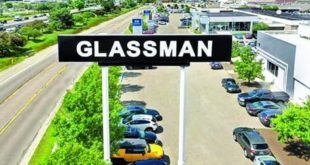Finance-and-insurance profits surged in the third quarter for all six publicly traded retailers as consumer demand and short supply pushed up pricing on new- and used-vehicle sales.
In a record-setting quarter amid the coronavirus pandemic, all six retailers raised same-store F&I profits by more than $ 100. Several public groups reported record-high F&I profit per vehicle, and two earned more than $ 2,000 on average in F&I profit per vehicle sold. New leadership, ongoing training and technology improvements in the finance office were among reasons given for the growth.
Group 1 Automotive, of Houston, raised average F&I profit per vehicle retailed in the U.S. in the third quarter to $ 2,041, the second retailer to do so after AutoNation Inc. F&I profit per vehicle retailed rose 17 percent, or $ 290, the most improved profit growth among the public groups.
Companywide, including dealerships in Brazil and the U.K., average F&I profit per vehicle was $ 1,655. Daryl Kenningham, Group 1 president of the U.S. and Brazil, told investors in a call last week that F&I was a major profit driver in the quarter.
“Despite the decline in same-store unit sales, our record same store F&I performance of $ 2,041 allowed us to maintain prior-year F&I gross profit levels,” he said, attributing the gain to higher F&I product penetration.
The other public groups reported these results in same-store F&I profit per vehicle:
- AutoNation, of Fort Lauderdale, Fla., up 11 percent, or $ 213, to $ 2,154
- Asbury Automotive Group, of Duluth, Ga., up 13 percent, or $ 208, to $ 1,830
- Sonic Automotive Inc., of Charlotte, N.C., up 7.6 percent, or $ 122, to $ 1,722
- Lithia Motors, of Medford, Ore., up 9.8 percent, or $ 144, to $ 1,617
- Penske Automotive Group, of Bloomfield Hills, Mich., up 11 percent, or $ 139, to $ 1,416.
Sonic President Jeff Dyke said on an Oct. 29 call with analysts and investors that continued growth in F&I per vehicle sold was among the reasons for the record quarterly results based on adjusted earnings per share. Still, Dyke sees room for improvement.
“We get it a little better and a little better as an organization. And October is no different,” he said. “There’s a lot of upside, and when you place that upside — a couple of hundred dollars a car on the kind of volume that we do — that’s a big number.”
Digital retailing is increasing across the group, Dyke added, particularly at its used-only locations. But the uptick hasn’t harmed those profits. Sonic’s EchoPark delivery and buy center in Greenville, S.C., where people pick up their vehicles, isn’t even in the same city as the F&I and sales department, which the group said is housed in Charlotte, N.C.
“And our F&I numbers haven’t changed, right? The more the business becomes online, we can still sell F&I products. And as you know, that’s a real big part of EchoPark’s profitability statement. It’s all of it,” Dyke said on the call. “And so that was a big question mark in our head, and we’ve overcome that.”
Roger Penske said on an Oct. 22 call with analysts and investors that Penske’s “F&I process through docuPAD continues to drive higher F&I income with no physical exchange of documents.”
Asbury trains F&I managers in-house, executives told Automotive News, and focuses on raising per-vehicle profits among the group’s underperforming personnel.
“We’re always tweaking it, always evolving,” said Dan Clara, Asbury’s senior vice president of operations. “Obviously with the pandemic coming here, there were different adjustments we had to make, especially with the home deliveries … but nothing materially changed.”
Last year, Asbury hired Paris Ramirez as its new national finance director. Training processes remain the same, but Ramirez “came in with a fresh set of eyes,” CEO David Hult said.


